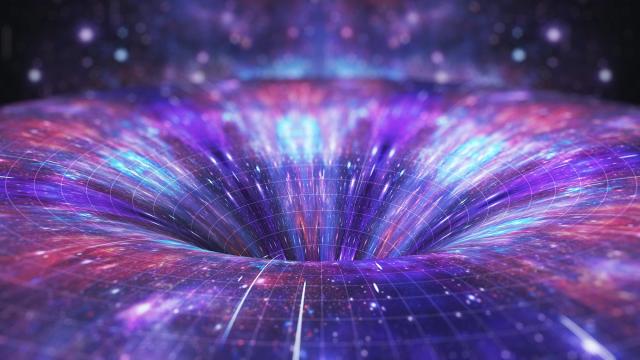What Rules The Proton: Quarks Or Gluons?
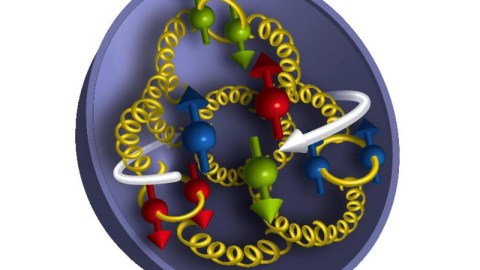
Is a proton fundamentally more ‘quarky’ or ‘gluey’ in nature?
One question that every curious child winds up asking at some point or other is, “what are things made of?” Every ingredient, it seems, is made up of other, more fundamental ingredients at a smaller and smaller scale. Humans are made of up organs, which are made of cells, which are made of organelles, which are made of molecules, which are made of atoms. For some time, we thought that atoms were fundamental — after all the Greek word that they’re named for, ἄτομος, literally means “uncuttable” — since each type of atom has its own unique physical and chemical properties.
But experiments taught us that atoms were made of nuclei and electrons, and those nuclei are divisible into protons and neutrons. Finally, the advent of modern experimental high-energy physics taught us that even the proton and neutron have smaller particles inside of them: quarks and gluons. You often hear that each nucleon, like a proton or neutron, has three quarks inside of it, and that the quarks exchange gluons. But that isn’t the full picture at all. In fact, if you ask, “what’s more important to the proton: quarks or gluons,” the answer depends on how you ask it. Here’s what really matters inside a proton.
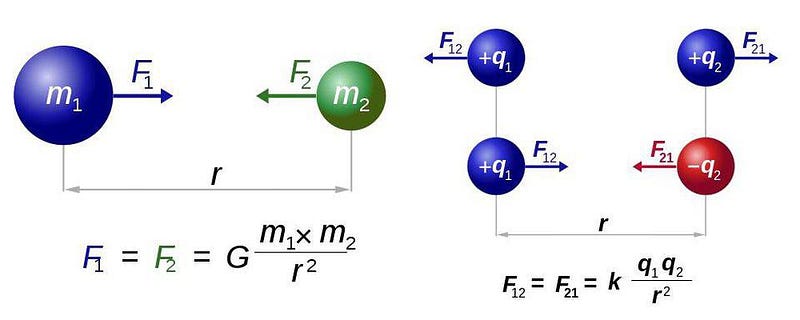
If you take a charged particle and bring it close to an electron, the electron will either attract or repel it with a specific force (the electrostatic force) that’s directly related to only two things: the particle’s electric charge and its distance from the electron. If you did the exact same experiment, but with a proton instead of an electron, you’d get a force that was equal-and-opposite to the force the charged particle experienced in the first experiment. The reason? The proton’s charge is equal and opposite to the electron’s charge.
So you might think, then, what if we measured the magnetic moment of the proton and the electron? Particles can have an intrinsic angular momentum to them — known as spin — and an electron, being a fundamental particle with no internal structure, has a magnetic moment that’s directly proportional to its charge, mass, the speed of light, and Planck’s constant. You might think, then, that if you just replace the mass of the electron with the mass of the proton, and flipped the sign (from the opposite electric charge), you’d get the proton’s magnetic moment. Similarly, because the neutron is neutral, you might expect its magnetic moment is zero.
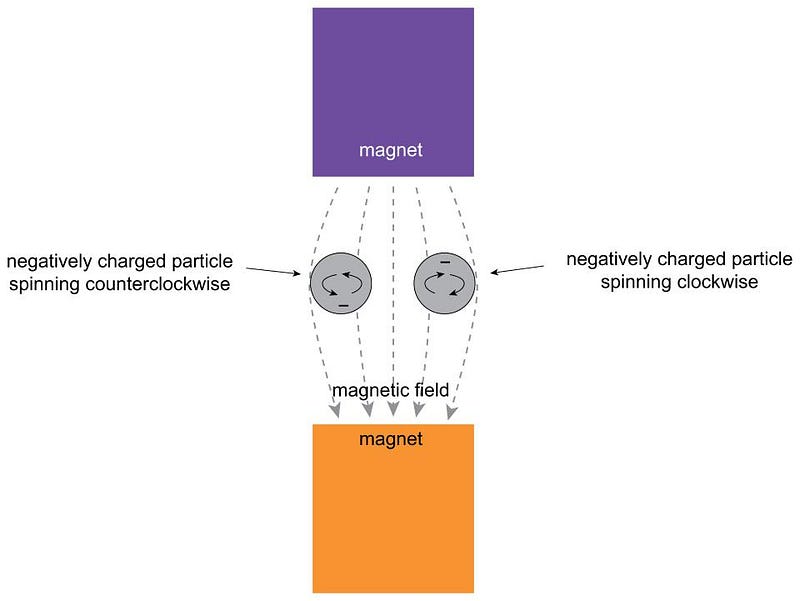
But that’s not what nature gives us at all, and that’s a major clue that the proton and neutron aren’t fundamental. Instead, the proton’s magnetic moment is almost three times as large as that naive expectation, while the neutron’s magnetic moment is about two-thirds of the proton’s value, but with the opposite sign.
What is going on here?
Things make a lot more sense if you consider the possibility that the proton and neutron aren’t themselves fundamental, point-like particles, but rather are composite particles made up of multiple charged components. There are two ways that nature can make a magnetic moment. The first is from the inherent angular momentum, or spin, of a particle, like we have for the electron. The second, though, happens whenever we have an electric charge that’s physically moving through space; moving charges make currents, and electric currents induce magnetic fields. Just as an electron orbiting a nucleus makes its own magnetic moment, charged constituent particles inside a single proton (or neutron) will contribute to the proton’s (or neutron’s) magnetic moment, in addition to whatever the intrinsic charges and spins of the particles inside contribute.
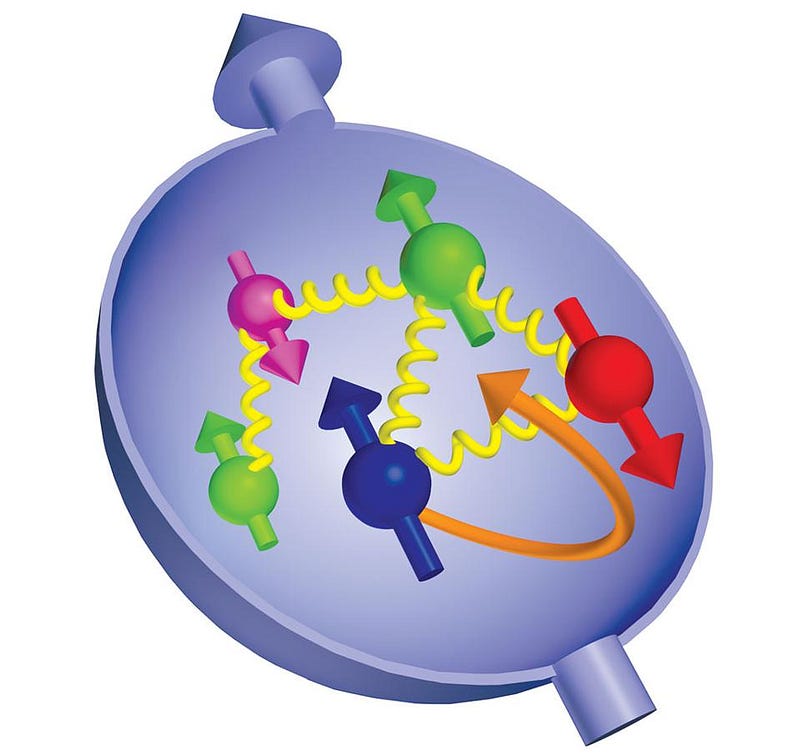
That was indirect evidence, before we ever directly probed the internal structure of protons and neutrons, that they must have been composed of smaller, still more fundamental constituent particles.
Another clue came from early experiments that involved colliding low-energy protons (they were considered “high-energy” experiments at the time, but would be considered “low-energy” today) into other particles, and then detecting what came out. In addition to the debris from those collisions — you know, things like other protons, neutrons, and electrons — we were able to detect new kinds of particles that hadn’t been seen before.
Some were neutral, some were positively charged, and some were negatively charged. Some lived for a few tens of nanoseconds before decaying, others lived for only fractions of a femtosecond: a factor of a billion less than the longer-lived particles. But all of them were much lighter than either a proton or neutron, while being heavier than an electron or a muon.
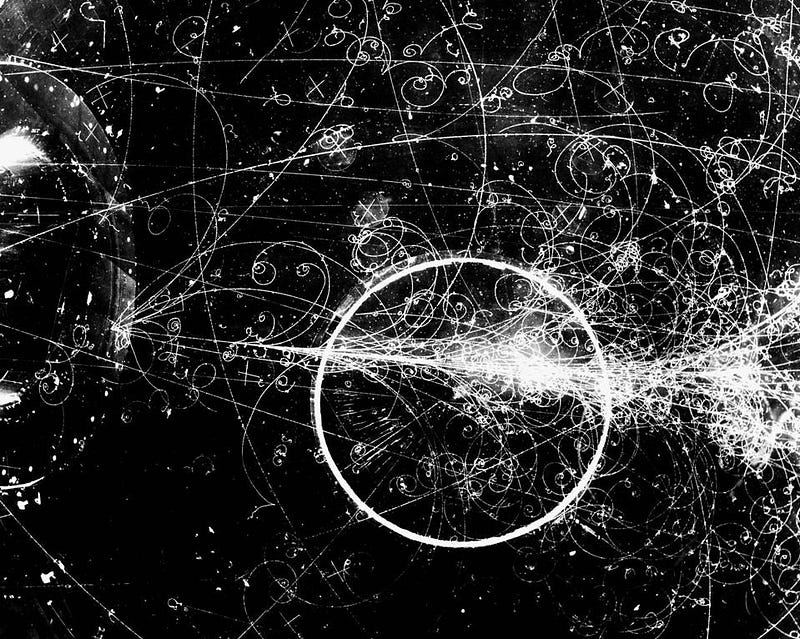
These newly discovered particles were known as pions (or π mesons), and they came in three varieties: the π+, π-, and π⁰, corresponding to their electric charges. They were lighter than protons and neutrons, but clearly came from colliding them with other protons and neutrons.
How could these things exist if protons and neutrons were fundamental?
One brilliant (but, spoiler, incorrect) idea came courtesy of Shoichi Sakata: perhaps the proton and neutron, as well as their antiparticle counterparts, were the only fundamental things in existence. Perhaps you made these pions as follows:
- a π+ particle is a composite bound state of a proton and an anti-neutron,
- a π- particle is a composite bound state of an anti-proton and a neutron,
- and a π⁰ particle is a mixture of a bound state of a proton-antiproton and neutron-antineutron combination.
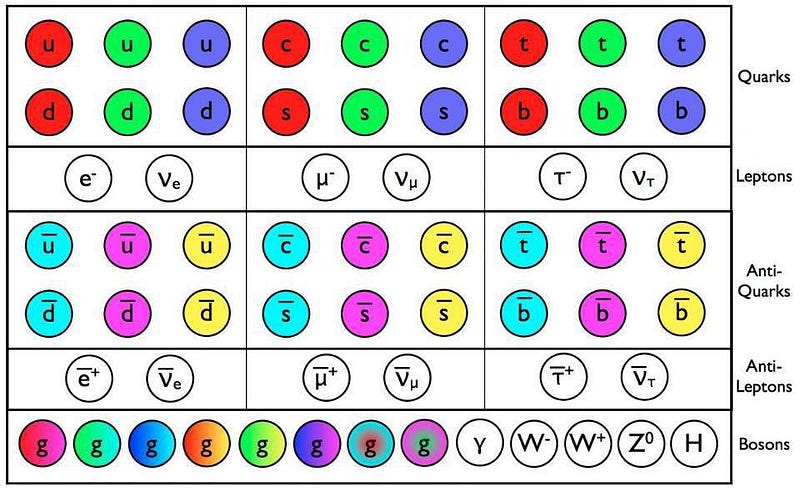
The biggest objection to this was that the pions were so much less massive than either the proton or neutron — about 15% of their masses, only — that it was unclear how the negative binding energy could remove that much mass.
The resolution would come later on, when we started building high-energy colliders that enabled us to smash particles into protons with enough energy to truly find out what was inside. These deep inelastic scattering experiments showed, experimentally, that there were indeed individual structures inside the proton, and that individual fundamental particles (like electrons) would scatter off of them in different ways.
On the experimental side, these became known as partons, while the theoretical idea of quarks took hold on the theory side, explaining the internal structure of matter as well as the compositions of protons, neutrons, pions, and numerous other particles that were subsequently discovered throughout the 1950s and 1960s. We now know that partons and quarks are the same things, and that:
- protons are made of two up quarks and one down quark,
- neutrons are made of one up quark and two down quarks,
- the π+ is made of an up and an anti-down quark,
- the π- is made of an anti-up and a down quark,
- and that the π⁰ particle is a mix of up/anti-up and down/anti-down quarks.
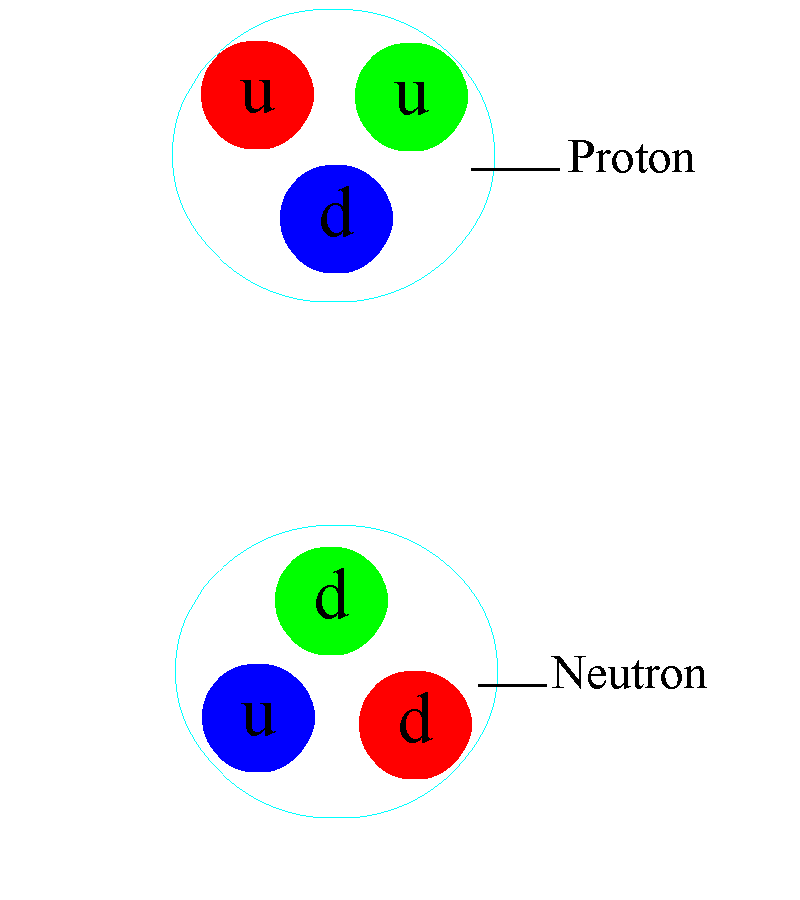
But those quarks are only a small part of the story. In addition to electric charges — up quarks have a charge of +⅔e and down quarks have -⅓e, with the antiquarks having the opposite charge, and where e is the magnitude of the electron’s charge — quarks also have a color charge: a new type of charge that’s responsible for the strong nuclear force. This force has to be stronger than the electric repulsion between the various quarks, otherwise the proton would simply fly apart.
The way it works is fascinating and a little counterintuitive. The electromagnetic force occurs, in quantum field theory, through the exchange of photons between electrically-charged particles. Similarly, the strong nuclear force occurs through the exchange of gluons between color-charged particles. While the electric force goes to zero at infinite distances but gets stronger the closer two particles get, the strong force goes to zero when particles are very close, but gets stronger — like a stretched spring — when they pull apart. The combination of these factors leads to the proton’s size (about ~0.84 femtometers) and mass (938 MeV/c²), where only about 1-to-2% of its mass comes from the three up-and-down quarks that make it up.

At today’s modern high-energy colliders, we smash protons into other protons at exceedingly high energies: energies that correspond to them moving at up to 99.999999% the speed of light. Based on what comes out, we can tell what it is that’s interacting.
- Is it a quark from one proton interacting with a quark from another proton?
- Is it a quark from one proton interacting with a gluon from another proton?
- Or is it a gluon from one proton interacting with a gluon from another proton?
The interesting thing that we find is that the answer depends on the collisional energy!
Lower energy collisions are dominated by quark-quark interactions, and practically all of the quarks are the ones you’d expect: up and down quarks.
Higher energy collisions start to see greater percentages of quark-gluon interactions in addition to quark-quark interactions, and some of the quarks may turn out to be strange or even charm quarks in nature: heavier, unstable, second-generation cousins of the lighter first-generation up and down quarks.
And at still higher energies, you become dominated by gluon-gluon interactions. At the LHC, for example, over 90% of all of the collisions recorded are reconstructed to be gluon-gluon interactions, with collisions involving quarks making up a tiny minority.
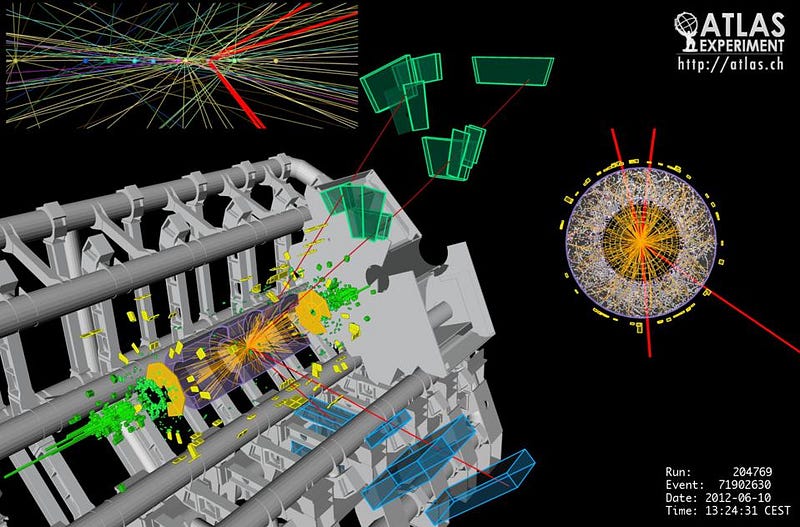
What this teaches us is that our picture of the proton, like pretty much everything else in the quantum Universe, changes depending on how we look at it. As we go to higher energies, we see that protons go from being point-like to having an internal structure. We see that internal structure as initially being made of three (valence) quarks, but that gives way to a more complex picture inside: where a sea of gluons and quark-antiquark pairs begin to appear. The higher the energies, the more internal particles we find, including particles with higher rest masses (like the heavier quarks) and, eventually, a fraction of gluons that completely dominates.
The more energetically you look, the denser the sea of internal particles gets, and this trend continues up to and including the highest energies we’ve ever used to probe matter. At low energies, a proton is more “quarky” in nature, but at higher energies, it’s rather a “gluey” situation.
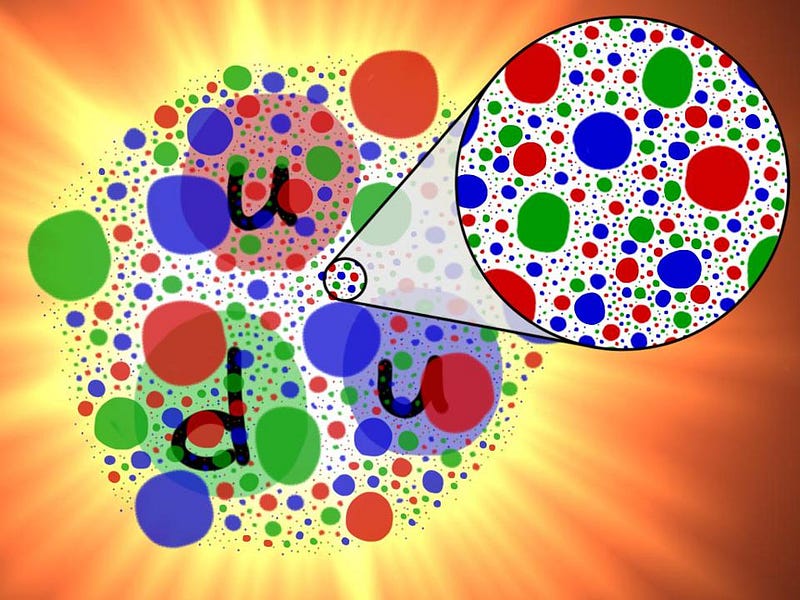
I like to make intuitive sense of this by thinking of the three valence quarks inside the proton as being points, and the particle that comes to collide with it as a wave. At higher energies, it has a shorter wavelength, and so it starts to get small compared to the size of a proton. At lower energies, the wavelength is larger, and it’s very difficult to avoid all of those quarks: like sliding a pizza stone down a shuffleboard course.
But at higher energies, you’re shrinking your wavelength; instead of a pizza stone, now you’re sliding a dime down the same course. There’s a chance you’ll still hit those quarks, but overwhelmingly, you’re much more likely to hit something in the “sea” between the quarks, which is overwhelmingly composed of gluons.
Many physicists wonder just how deep this trend continues. At higher and higher energies, will we just keep encountering an ever-denser sea of quarks and (mostly) gluons? Or will we reach a point where something novel and exciting appears, and if so, what will it be and where? The only way we’ll find out is by looking farther: with more collisions and — if humanity has the will to make it happen — at higher energies. A proton is more “gluey” than “quarky” inside, but who knows what truly lies inside it beyond our current frontiers?
Starts With A Bang is written by Ethan Siegel, Ph.D., author of Beyond The Galaxy, and Treknology: The Science of Star Trek from Tricorders to Warp Drive.





